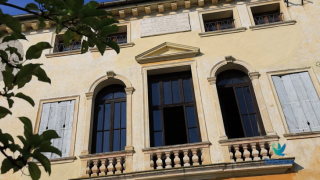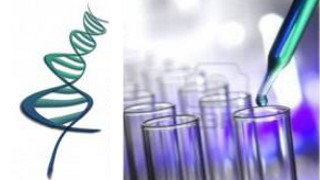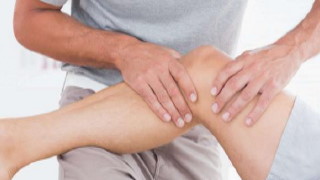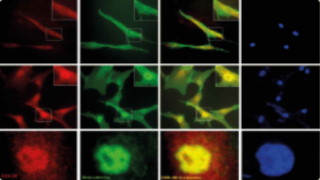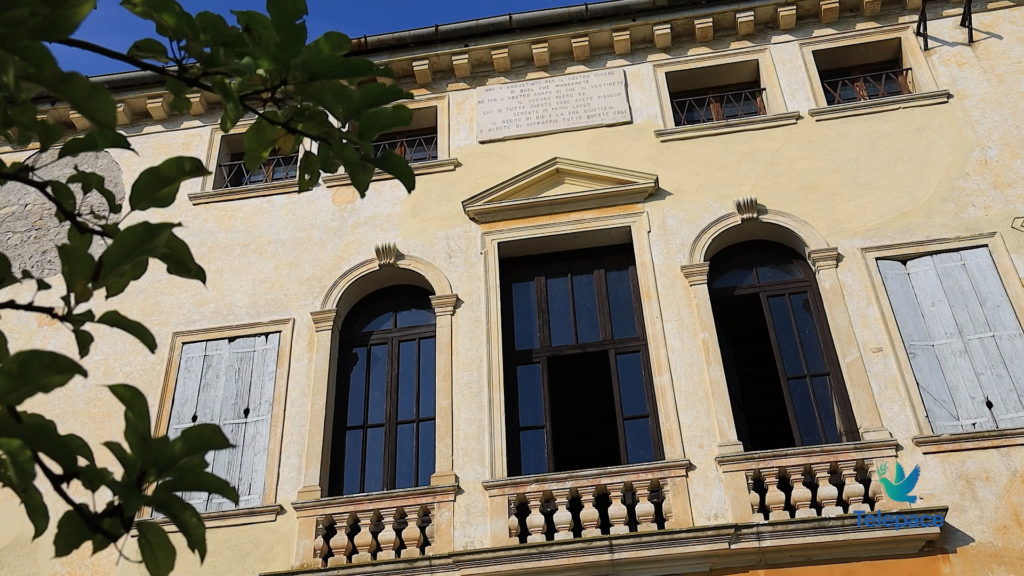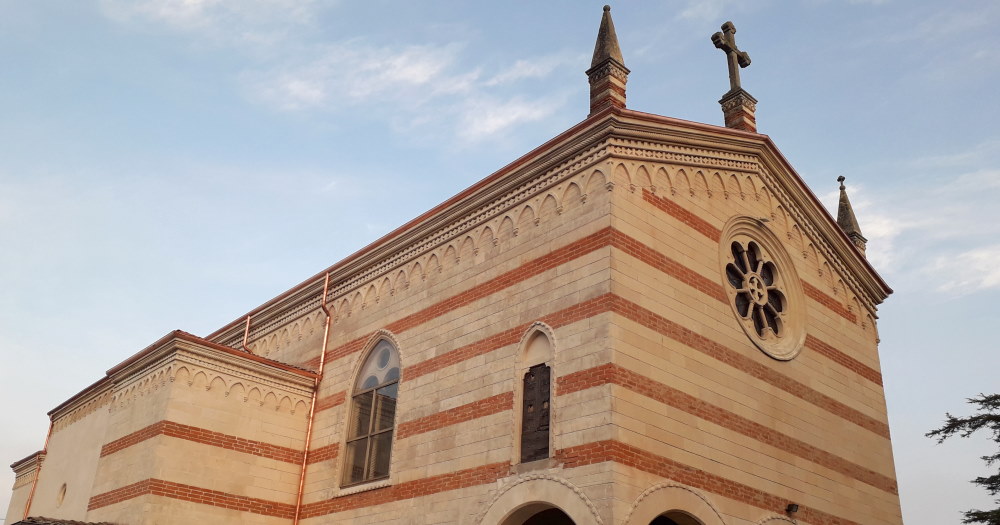L’ISTITUTO BASCHIROTTO PER L’UCRAINA
Presso l’Istituto Malattie Rare Mauro Baschirotto è stato allestito un centro di rifugio per i profughi Ucraini. Qui si trovano tutti gli ultimi aggiornamenti.
ISTITUTO MALATTIE RARE “MAURO BASCHIROTTO”
Si occupa di Riabilitazione, Ricerca e Diagnosi delle Malattie Rare, con l’intento di arricchire il panorama delle risposte assistenziali che sono offerte per la diagnosi e cura di queste patologie.
RICERCA SCIENTIFICA
Presso l’Unità di Genetica Medica vengono effettuati studi e ricerche per alcune Malattie Rare con lo scopo di approfondire i meccanismi patogenetici ed identificare possibili cure
FISIOTERAPIA E RIABILITAZIONE
Presso l’Istituto viene effettuata Fisioterapia e Riabilitazione neurologica, muscoloscheletrica e Post Covid-19 in regime ambulatoriale, previo appuntamento
UNITA’ DI GENETICA MEDICA
Comprende il servizio di consulenza genetica e di diagnosi molecolare per numerose malattie rare. La Carta Servizi è disponibile nella sezione dedicata all’Unità di Genetica Medica
- Dicembre 2025 (3)
- Novembre 2025 (1)
- Ottobre 2025 (1)
- Novembre 2024 (1)
- Ottobre 2024 (1)
- Luglio 2024 (2)
- Dicembre 2023 (1)
- Novembre 2023 (2)
- Ottobre 2023 (3)
- Settembre 2023 (1)
- Agosto 2023 (2)
- Aprile 2023 (1)
- Marzo 2023 (1)
- Febbraio 2023 (1)
- Gennaio 2023 (2)
- Dicembre 2022 (4)
- Novembre 2022 (2)
- Ottobre 2022 (1)
- Luglio 2022 (1)
- Aprile 2022 (2)
- Marzo 2022 (1)
- Febbraio 2022 (1)
- Gennaio 2022 (1)
- Dicembre 2021 (3)
- Ottobre 2021 (1)
- Agosto 2021 (2)
- Maggio 2021 (1)
- Aprile 2021 (1)
- Febbraio 2021 (2)
- Dicembre 2020 (2)
- Ottobre 2020 (1)
- Settembre 2020 (1)
- Luglio 2020 (1)
- Giugno 2020 (1)
- Aprile 2020 (2)
- Marzo 2020 (1)
- Febbraio 2020 (3)
- Dicembre 2019 (2)
- Agosto 2019 (1)
- Luglio 2019 (1)
- Aprile 2019 (1)
- Marzo 2019 (1)
- Febbraio 2019 (1)
- Novembre 2018 (3)
- Giugno 2018 (2)
- Febbraio 2018 (1)
- Dicembre 2017 (3)
- Luglio 2017 (2)
- Giugno 2017 (1)
- Marzo 2017 (1)
- Febbraio 2017 (2)
- Gennaio 2017 (1)
- Novembre 2016 (1)
- Settembre 2016 (2)
- Luglio 2016 (1)
- Aprile 2016 (5)
- Marzo 2016 (1)
- Febbraio 2016 (1)
- Gennaio 2016 (1)
- Dicembre 2015 (1)
- Ottobre 2015 (1)
- Agosto 2015 (1)
- Giugno 2015 (3)
- Aprile 2015 (1)
- Febbraio 2015 (1)
- Gennaio 2015 (3)
- Novembre 2014 (1)
- Settembre 2014 (3)
- Giugno 2014 (1)
- Maggio 2014 (4)
- Aprile 2014 (1)
- Febbraio 2014 (2)
- Gennaio 2014 (8)
- Dicembre 2013 (3)
- Novembre 2013 (2)
- Ottobre 2013 (1)
- Agosto 2013 (1)
- Luglio 2013 (1)
- Giugno 2013 (1)
- Marzo 2013 (4)
- Febbraio 2013 (1)
- Novembre 2012 (12)
- Maggio 2012 (1)
- Luglio 2010 (1)
L'Istituto Malattie Rare “Mauro Baschirotto” ha sede nell'ex-Istituto Don Calabria “Casa Buoni Fanciulli” a Costozza di Longare in provincia di Vicenza. La Fondazione si occupa di riabilitazione, ricerca, diagnosi e cura delle malattie rare e si pone come riferimento principalmente per malattie rare e/o genetiche al fine di arricchire in maniera rilevante il panorama delle risposte assistenziali che attualmente vengono offerte per la diagnosi e cura di queste patologie.
The “Mauro Baschirotto” Institute for Rare Diseases B.I.R.D. is located in the building called ex Don Calabria Institute “Casa Buoni Fanciulli” in Costozza di Longare, Vicenza, Italy. The foundation’s main aim is to offer rehabilitation, research, diagnosis and therapy for rare diseases. The Institute is a reference center for rare diseases with genetic and non genetic origins and contributes to the actual possibilities for diagnosis and treatment of these pathologies.
L’impatto sociale delle malattie rare è tutt’altro che trascurabile, sia per il fatto che il numero di pazienti colpiti è comunque significativo (spesso le malattie rare presentano una forte concentrazione in determinate aree geografiche o all’interno di determinate popolazioni), sia perché quasi sempre esse comportano gravissimi danni al paziente.
The social impact of the rare diseases is heavy due to the physical and psychological damages for patients and to the relative high number of affected people concentrated in specific geographical areas, or inside particular populations.
Politica dell’Istituto è quella di acquisire conoscenze più approfondite in materia, nonché sviluppare metodiche e strumenti diagnostici affidabili, farmaci efficaci, terapie adeguate e fornire in modo efficiente e sufficiente prodotti specifici per ciascuna patologia. L’Istituto svolge inoltre un importante ruolo di supporto scientifico a Università ed Enti privati, mediante convenzioni e collaborazioni che riguardano la diagnostica e la ricerca, sia nel campo delle forme rare che di quelle comuni.
The aims to the Institute are to acquire deep knowledge of genetic diseases and to develop reliable methods and diagnostic instruments. Furthermore, it helps in finding specific and efficient drugs and therapies for each pathology. The Institute has an important role in supporting Universities and private organizations, by the establishment of collaborations and projects for diagnosis and research in both genetic and non genetic rare diseases.
La Fondazione Malattie Rare “Mauro Baschirotto” ha messo a disposizione dell’Istituto il complesso di sua proprietà composto dalla “Villa Morlini Trento” del XVI secolo , dove si svolgono meetings, stages, incontri e corsi affiancata da una Chiesa più recente, costruita circa un secolo fa completamente affrescata.
The Foundation for Rare Diseases has made available to the Institute a complex of own property consisting of “Villa Morlini Trento”, of the sixteenth century, where meetings, workshops and courses are held, and a latest church built about a century ago and completely frescoed.
Annesso alla Villa esiste uno stabile nel quale sono ubicati al piano terra gli uffici, la sala convegni, i locali di soggiorno del presidio riabilitativo diurno; al primo piano uffici, studi e sedi di altre associazioni come l’Associazione Internazionale Prader-Willi, il gruppo pazienti LAM, il gruppo Lesch-Nyhan, il gruppo LDM, il gruppo SMA ed altre; al piano secondo sono ubicate le stanze di accoglienza per malati, per n. 20 posti letto, e per le famiglie che soggiornano periodicamente presso l’Istituto sia ai fini diagnostici che terapeutici che per gli incontri dei gruppi di informazione, formazione e autoaiuto.
Next to the villa there is a building including, on the ground floor, offices of the Foundation, a conference hall and the living quarters of the daytime rehabilitative garrison; on the first floor there are offices and location for the meeting of the Association such as the International Association Prader-Willi, the LAM patients group, the Lesch-Nyhan syndrome group, the MLD group, the SMA group, and others. On the second floor are located rooms for 20 patient host, and for families periodically housed at the Institute for both diagnostic and therapeutic purposes and for meetings of groups of information, training and self-help.
Separato dalla Villa esiste un fabbricato di circa 1800 mq. adibito al piano terra, per circa 600 mq, a quattro ambulatori con punto prelievo, sala d’attesa, accettazione pazienti, palestra riabilitativa con spogliatoio, box e sala trattamento. Al primo piano per circa 600 mq sono ubicati i laboratori di Genetica Medica attrezzati per diagnosi e ricerca con strumentazione d’avanguardia. Al piano secondo saranno allestiti laboratori di biologia cellulare e molecolare a completamento del laboratorio di genetica medica.
Separated from the villa there is a building of about 1800 sqm which is used, on the ground floor, for about 600 sqm as clinic rooms, sampling point, waiting room, patient acceptance, rehabilitation gym with changing room, box and treatment room. On the first floor for about 600 sqm are located the laboratories of Medical Genetics, equipped for diagnosis and research with advanced instrumentation. The second floor will be set up with cellular and molecular biology labs, as a complement of the Medical Genetics laboratory.
Il tutto è completato da un ampio giardino e da uno scoperto di circa 30.000 mq dove è già allestita una struttura sportiva comprendente il campo da calcio e gli spogliatoi e dove saranno allestite altre attività sportivo-riabilitative. Un ulteriore fabbricato totalmente indipendente destinerà a struttura protetta di accoglienza, o “Dopo di noi” per malati privi di assistenza familiare.
All the buildings are surrounded by a large garden and an overdraft of about 30,000 sqm, where it is already set up a sports facility including a football pitch and changing rooms and where other sport-rehabilitation activities will be set up. Another building totally independent from the Foundation will be allocated as a host safe structure, or “Dopo di noi”, for people without family support.


